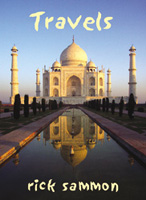Breakin Out On Your Own
Making It In The Free Lance World
I have been a full-time free-lance photographer and writer for 11 years. Before that, I also free-lanced as a part-time photographer and writer€but I did not share that information with my bosses. Like my other free-lance friends, I take my job very seriously. I'd like, however, to start this article with three jokes. Joke #1. Question: What's the difference between a US Savings Bond and a free-lance photographer? Answer: A US Savings Bond eventually matures and makes money. Joke #2. Question: How does a free-lancer spend his or her time? Answer: A free-lancer spends 50 percent of the time looking for work, 25 percent of the time trying to get paid, and 25 percent of the time actually working. Joke #3. Question: What's the most important thing a free-lance photographer needs? Answer: A working wife! All three jokes ring true to a certain degree--for the free-lancer who is starting out. As far as maturing goes, I, and most of my free-lance photographer friends, are kids at heart--probably because we love what we do. About making money? Well, in the beginning, it was tough. But, hard work pays off, and now the bills are being paid. Just as I recommend you have an image test file for evaluating new printers, inks, and media, I think you should also have a test image for evaluating color. My test file came to me inadvertently with a photograph made by eDigitalPhoto.com contributor John Stewart inside the FAO Schwartz toy store in Orlando during last year's PMA show. I always test color correction software using this digital camera file that was made under all kinds of mixed lighting conditions. Although Stewart used the camera's built-in flash, skin tone and every other color in the photograph was out of kilter. |
|||
Getting Started Get started. Ah, getting started is the hardest part€almost as hard as it is to stay there--because the competition is strong. I got started by sending my pictures to photography and travel magazines (listed in The Writer's Market and The Photographer's Market). I got tons of rejections, but I followed the "never give up" philosophy and eventually got my work into print. Then, I tried to get a book contract using those tear sheets. More rejections. But, I stuck to it and eventually got a book contract, and another and another. Getting Over Rejection |
|||
Be An Assistant TCB Collections Get Known Another way to make yourself famous is to promote the heck out of yourself. Try to get in as many publications as possible. The more people who see your name and the more you are published, the more "famous" you are. Please keep in mind, however, the saying on the sign I have on my desk: Don't Believe Your Own PR. Tech Updates And speaking of technology, all the pros I know use Adobe Photoshop to fix up and enhance their images--even if they are only sharpening them. If you are not into Photoshop (or other professional image-enhancing programs) you simply can't compete on a professional level with your fellow free-lancers. Network Your Best Shots What's a good photograph? Well, think about what Duke Ellington said about music, "If it sounds good, it is good." The same could be said for a picture. If it looks good, it is good. Photograph what you like and you'll like your pictures. You may want to specialize, in travel, nature, or photojournalism and so on. I specialize in not specializing. It works for me. Make Your Own Luck Long-time "Shutterbug" contributor, Rick Sammon, has written 20 books and thousands of newspaper and magazine articles. He also hosts the ESPN Photo Safari and has his own photography series on the DIY cable/satellite network. Rick's experience makes him the perfect person to write about free-lancing. Want more great photo tips from Rick? Check out his "how to" CD-ROM entitled, "The Camera Looks Both Ways." Drop Rick an e-mail for ordering info at: ricksammon@aol.com. |



































